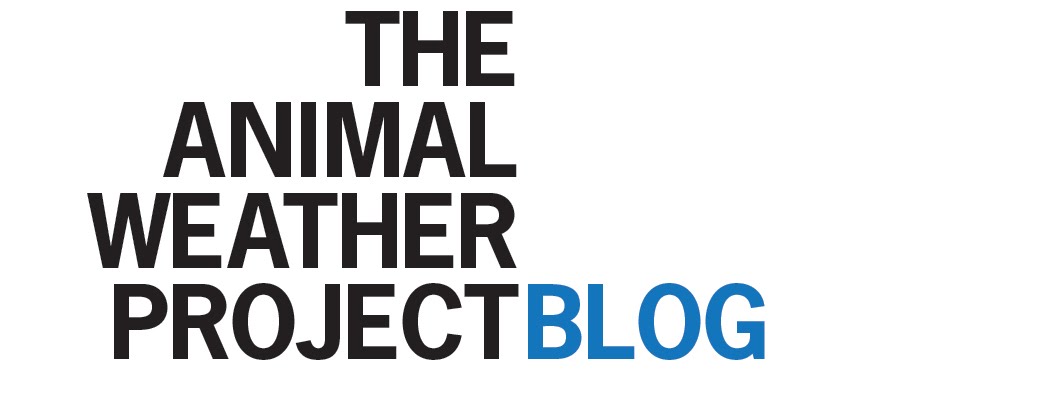Wednesday 1 June 2011
Thursday 5 May 2011
Friday 22 April 2011
Disaster Prediction System & Creative Review coverage...


We have devised a disaster prediction system based on the L'Aquila earthquake toads, and Sumatran tsunami water buffalo case studies. Recently, Creative Review Magazine have run a fascinating article discussing what designers can do to help in disasters. We were lucky enough to see our Disaster Prediction scheme get a brief write up in the May 2011 issue:

Sunday 17 April 2011
Nokia - HK Honey from The Silentlights on Vimeo.
Thursday 14 April 2011
GUEST BLOGGER: BARBARA NAPIER, ANIMO.
ANIMO SPAIN:
Animals can predict weather AND human phenomena
By: Barbara Napier
My specialty is more in how animals can predict seizures and improve health in humans, but together with my father, a scientist, we started a study on how animals and insects can predict natural disasters and weather. In the sixties, we lived for a year in Maryland, USA. Where we lived, everyone had two thousand acres with farm animals in the fields. Maryland is famous for its electrical storms, which are very deadly. While the skies were still blue, the cattle would head for the most remote section of pasture and huddle in a circle, always with the young on the inside. Within a matter of six to twelve hours, an electrical storm would move in. The Native American Indians always followed the lead of the buffalo and the wild horses. Before a tornado they would move off the plains and into a low lying area, surrounded by hills and the Indians would follow. How did they know a tornado was coming? How did they know where to go to save themselves? No one seems to have the answer, yet the animals know. We have learned to rely too much on technology and have left behind some of the most valuable information left to us by our forefathers.
When we moved to Spain in the seventies, we became once again interested in this subject. I had started ANIMO, a national association for the investigation into all types of animal assisted therapy. We figured that saving lives also fit into the association. ANIMO ran a center to help severely disabled people lead a better quality of life by incorporating animals. We found that not only could dogs predict epileptic seizures but so could horses, up to half an hour before the seizure. Seizure dogs are now legal in America as are dogs that can tell a diabetics sugar level, and other assistance dogs such as hearing dogs and dogs for the physically disabled. The main part of ANIMO concentrated in therapeutic riding and is now involved in a new research project; called ANIMO-ALBERO, where we have proven that the horse can make dysfunctional organs function, reduce pain, increase circulation and a list that gets longer every day. It is a program to improve the length and quality of life in people with terminal illness or to help remove the toxins and side effects from medical treatments such as chemotherapy and steroids.
Because of my father’s love of the sea and mine of riding through the countryside talking to farmers, we started to collect some interesting information. The fisherman all knew before a storm was coming because the seagulls would stop following their ships and head inland; it was a good sign that they should follow suit. On a very warm sunny day a farmer showed me three flying ants and told me it would rain the next day. This was very important for her so she could get her hay and other things that couldn’t get wet, inside. The weather man said it would be a sunny summer week. He was wrong and the farmer saved her crops. We have swallows that migrate to Africa every winter and return to their same nests or home in the spring, to start their new families. What month they come in and leave in, not only determines how many clutches of eggs they will have, but when we will have an early spring or early fall. They have between two to six clutches of eggs a season, depending on the length of the season.
As a psychology major with a minor in cultural anthropology I joined in some interesting debates at university. As far as animals detecting illness in people, they have also now found that dogs can predict cancer long before a CAT scan. The psychology department felt that the animals could see an electrical field around the body or an aura and could see when there was a flaw. The scientific side felt that it all had to do with the olfactory ability of the animals, assuming that the body gave off a certain odour before a seizure or other problem.
In tribes throughout Africa and the aborigines in Australia, apparently simple people know how to follow the animals, birds and insects to keep out of harm’s way or to protect their crops and farm animals. It is common knowledge that animals, free in nature, know before an earthquake or other natural disaster strikes, we just have to learn to understand what they are telling us.
Governments spend billions of dollars every year trying to predict the weather and equally the medical profession on diagnosing illness. If our university students took it upon themselves to get their universities involved and start investigating by interviewing people who have no technology yet their livelihood depends on nature, we would probably know much more than we do today. For example missionaries and the Red Cross, people who go into outlying areas and help the natives, would be a good starting point. This study could include just about every field of research and could save lives while improving animal awareness.
Wednesday 13 April 2011
A little hint of the next output from The Animal Weather Project - video forecasts.
Also, guest posters and infographics on the way soon.
